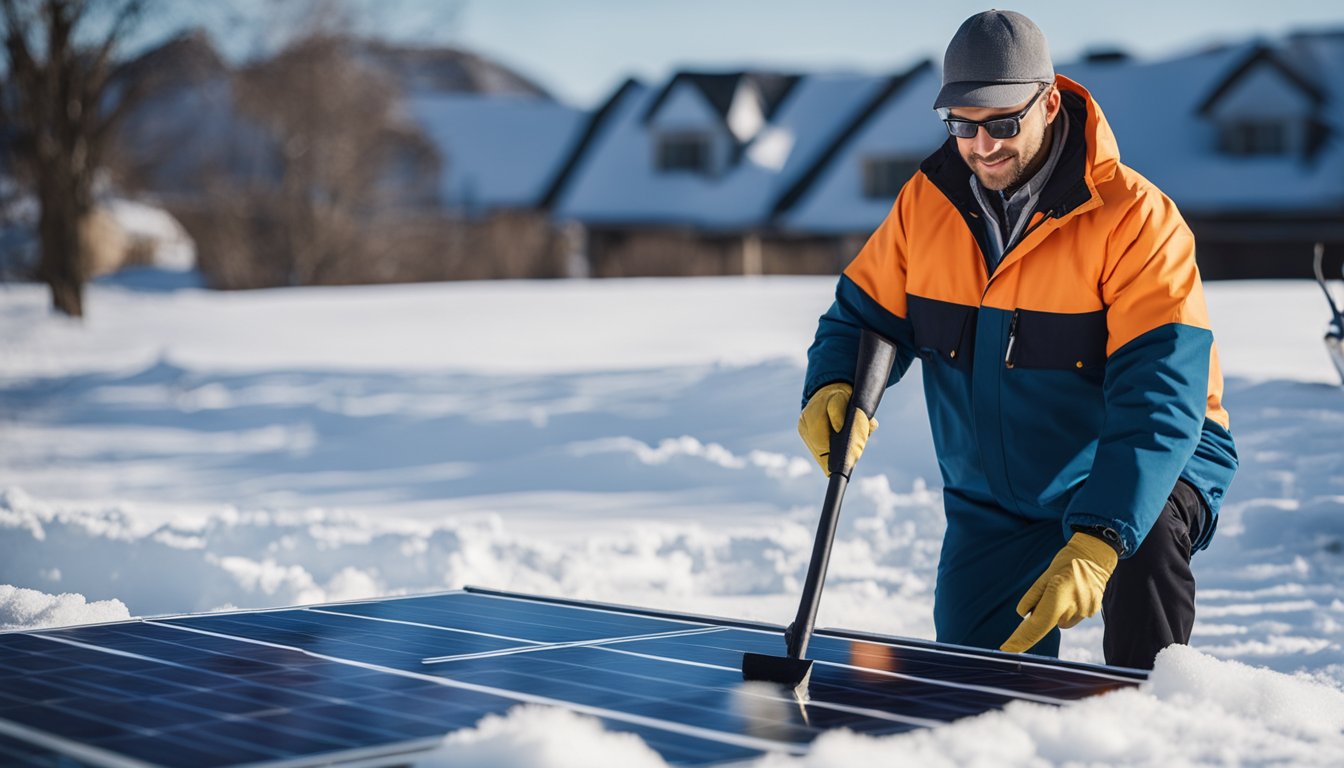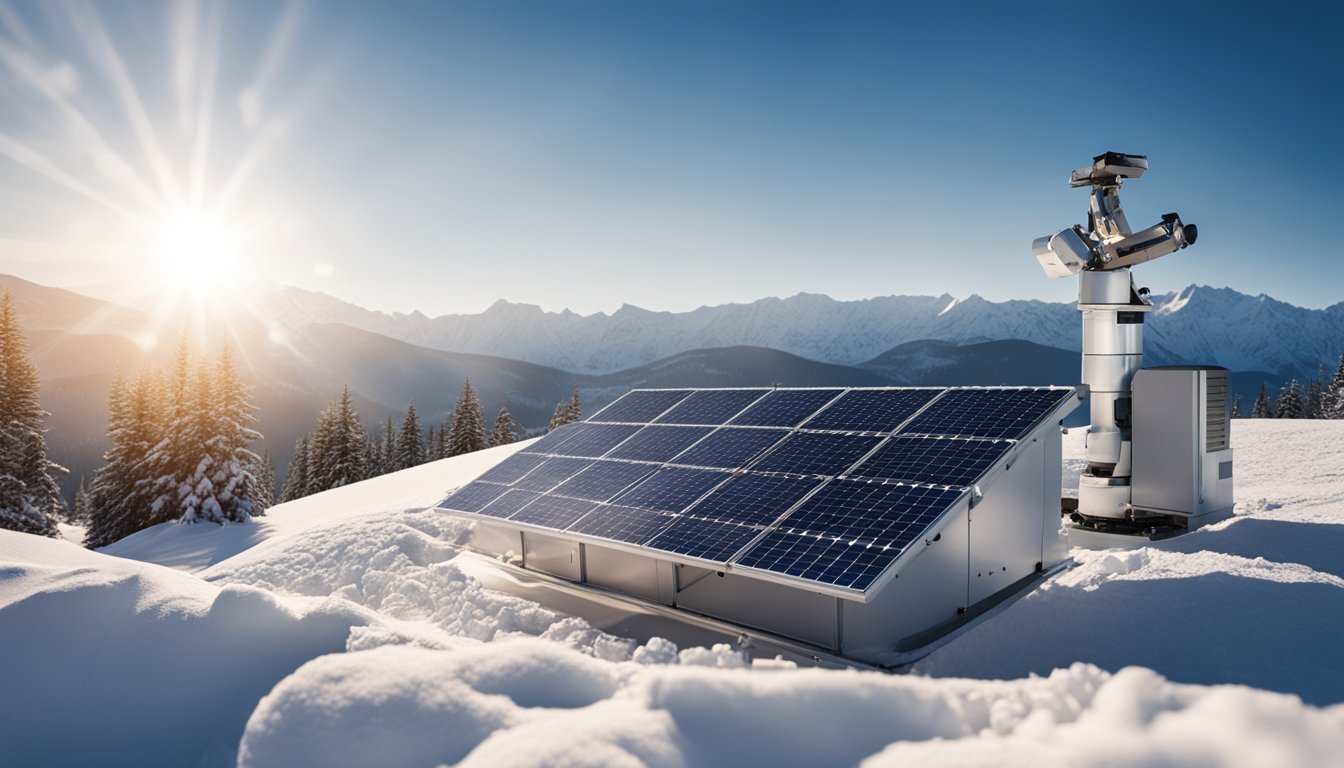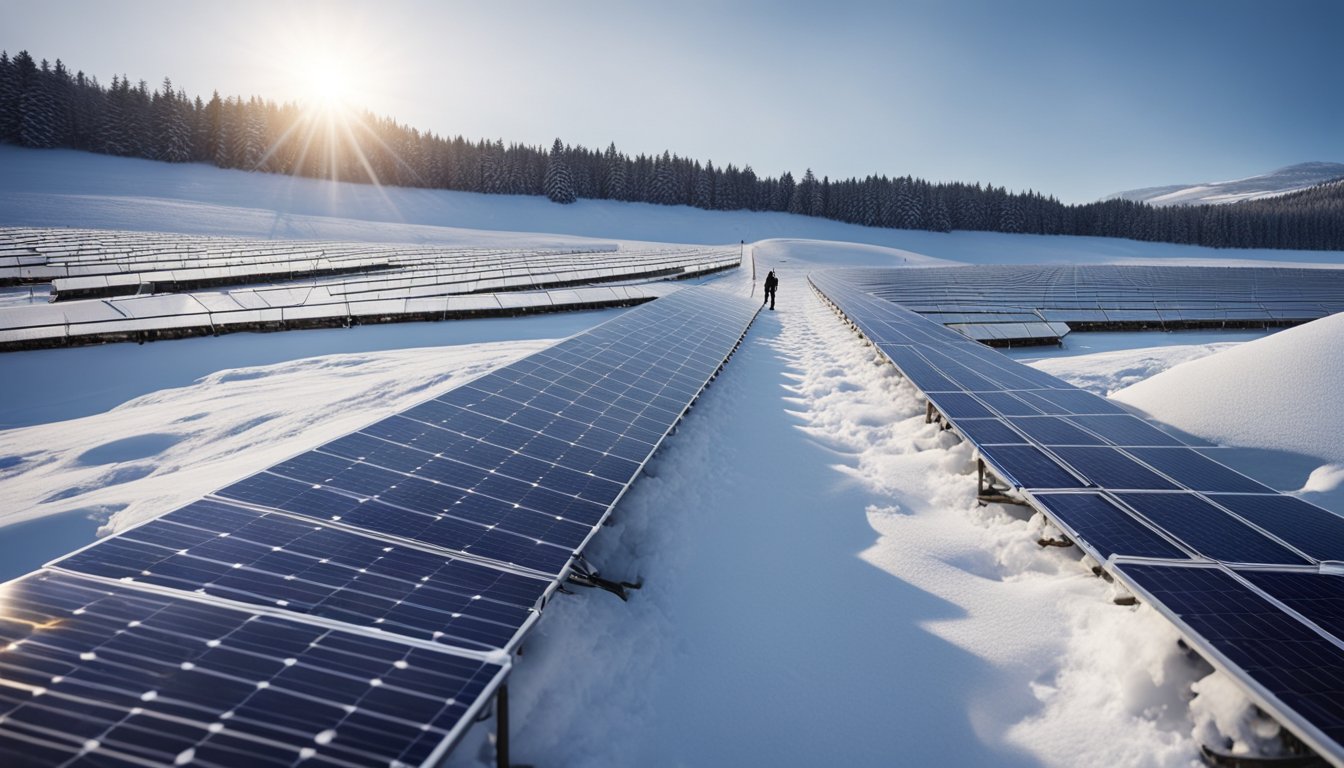Late updated: 01 Feb 2025 09:02
Written by: Eleanor Hartman
Solar Panel Maintenance Tips for British Winters: Essential Strategies for Optimal Performance
The winter months can pose unique challenges for solar energy production. Though solar panels are designed to function throughout the year, harsh weather conditions can sometimes impact their efficiency. Conducting regular maintenance and optimising panel placement are crucial for maximising solar energy output during winter. Effective upkeep not only ensures optimal performance but also extends the longevity of the panels.

In the UK, the low winter sun and frequent overcast skies may seem daunting for solar panel owners. Yet, with the right strategies, it's possible to maintain energy efficiency. Simple practices such as clearing debris and snow from the panels, along with regular maintenance checks, can significantly enhance solar panel resilience against winter-specific challenges.
Investing time in understanding the seasonal adjustments necessary for solar panels will help us harness renewable energy even in colder weather. Whether we are addressing commonly encountered issues or optimising our panel systems, a proactive approach ensures that energy output remains steady and reliable.
Key Takeaways
- Regular maintenance boosts solar panel winter performance.
- Clearing snow and debris increases efficiency.
- Strategic placement optimises winter sun capture.
Essential Winter Maintenance for Solar Panels
During British winters, maintaining the efficiency of our solar panels requires attention to specific aspects: adjusting the tilt angle for optimal sunlight exposure, ensuring panels are clean, and implementing effective snow removal strategies.
Adjusting the Tilt Angle
In winter, the angle of the sun changes, which can impact the efficiency of solar panels. We should adjust the tilt angle to capture the maximum amount of sunlight. It is ideal to increase the tilt angle by approximately 10-15 degrees compared to summer settings.
By doing so, we position our panels to capture more solar energy during reduced sunlight hours. This adjustment minimises energy loss and maximises the benefits of our solar investment during the winter months.
Routine Solar Panel Cleaning
Keeping the solar panels clean is crucial for maintaining efficiency. Dust, debris, and fallen leaves can reduce their effectiveness, especially in winter when there is less sunlight. Regularly scheduled cleaning sessions help keep our panels free of any obstruction.
Using a soft brush or a low-pressure water hose is advisable to remove dirt without damaging the panels. Avoid using abrasive materials or detergents that could scratch or corrode the surface. By maintaining a clean surface, we enhance the panels' capacity to absorb sunlight.
Effective Snow Removal Strategies
Snow accumulation on solar panels is a common issue during British winters. It can block sunlight and drastically reduce energy production. To tackle this, we should develop a consistent snow removal routine. Employing a solar panel snow rake can be a practical solution.
These rakes are designed to remove snow without scratching the panel surface. It's crucial to approach this task with care to prevent any damage to the panels. Additionally, promptly removing snow ensures that our panels return to full efficiency quickly, optimising their performance during the shorter winter days.
Optimising Solar Energy Production During Winter

As the winter months approach, maintaining optimal solar energy production becomes crucial. We can implement strategies to maximise energy output despite reduced sunlight hours and colder conditions. One of the key approaches involves the effective use of solar battery storage, while another focuses on addressing the challenges posed by shorter days.
Utilising Solar Battery Storage
Solar battery storage plays a vital role in ensuring steady energy supply during the winter. By storing excess energy generated during sunnier periods, we can use it when sunlight is scarce. Batteries allow us to balance production and consumption, ensuring efficiency.
Investing in high-capacity batteries means we can store more energy, preparing for overcast days. Regular maintenance, such as checking charge levels and ensuring connections are secure, keeps the system reliable. Moreover, using smart inverters can enhance storage capabilities by regulating energy flow, optimising both storage and use.
Addressing Reduced Sunlight Hours
During winter, reduced sunlight hours impact energy production. Adjusting the tilt of solar panels can capture more sunlight. Photovoltaic cells perform better with a steeper tilt, maximising exposure to low winter sun angles.
Keeping panels clean of snow and debris ensures they operate efficiently. Regular cleaning maintains optimal energy absorption. In areas prone to snow, anti-reflective coatings can prevent snow accumulation, further enhancing productivity. Additionally, positioning panels to avoid shading from nearby trees or structures, especially during peak sunlight hours, ensures maximised energy capture.
These strategies can significantly improve solar performance throughout the winter months, providing a more consistent and reliable energy supply.
Frequently Asked Questions

Winter presents specific challenges and opportunities for maintaining solar panels. We'll explore essential maintenance practices, potential causes for higher energy bills, cleaning techniques, snow management strategies, and the impact of shading on performance.
What are the best practices for solar panel maintenance during the winter months?
Maintaining clear panels is crucial. Regularly remove snow, debris, and excessive dirt to ensure maximum sunlight exposure. Inspect connections and mounts periodically for any damages caused by harsh weather. Investing in battery storage can help offset decreased sunlight availability during shorter days.
What might cause an increased electricity bill despite having solar panels installed?
Shorter daylight hours reduce solar power generation, necessitating higher dependency on grid electricity. Panels covered by snow or debris can further limit energy production. We should also check for any system faults or inefficiencies that might arise during winter.
Is it advisable to use household cleaning agents, like Dawn dish soap, to clean solar panels?
Avoid using household cleaning agents as they can leave residues or cause damage over time. We recommend using mild soap solutions specifically designed for solar panels. Alternatively, rinsing with plain water is generally sufficient and safe for regular cleaning.
Should one hose down solar panels as part of their regular maintenance routine?
While hosing down panels can help keep them clean, ensure the water is not too cold, as rapid temperature changes might damage the panels. Gently rinsing with lukewarm water on a mild day is a safer option. We must be careful to avoid high pressure that could harm the system.
How can snow accumulation affect solar panel efficiency, and what measures should be taken?
Snow can block sunlight, reducing efficiency significantly. Panels should be installed at angles that facilitate natural snow shedding. When accumulation occurs, gently brush off the snow using a soft tool designed for this purpose, avoiding any abrasive materials that might damage the surface.
Can shading from trees or buildings impact solar panel performance in winter?
Shading reduces panel efficiency considerably, especially when sunlight is already scarce. We should trim any branches or foliage that might block sunlight, and ensure nothing obstructs the panels from capturing maximum available light. Repositioning panels might be necessary if new structures cause shading.